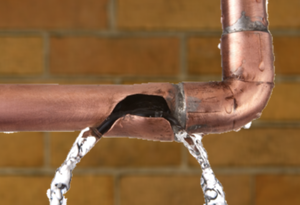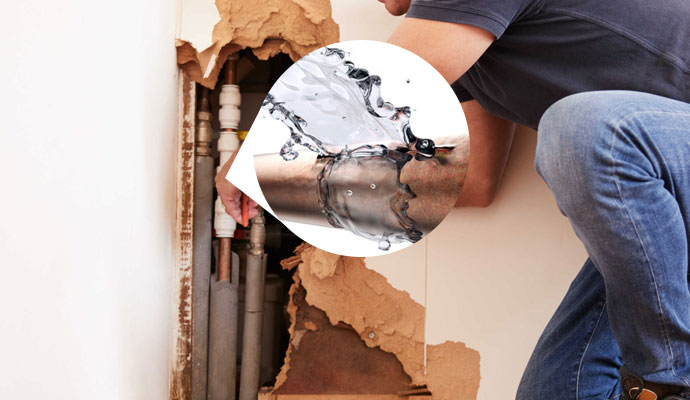Quick-Response Plumbing: Tips for Identifying and Dealing With Burst Pipes
Quick-Response Plumbing: Tips for Identifying and Dealing With Burst Pipes
Blog Article
How do you actually feel with regards to What to Know Before Installing a Dishwasher?

A ruptured pipeline is a major emergency; you can only stand as you enjoy water you pay a lot to rejoin with the earth. In worse situations, you observe a pool on your kitchen floor, which is a wonderful trip risk, particularly if you have youngsters around. If the pipeline that ruptured remained in your wall surfaces, trouble: you may need to repaint that entire section.
Exactly how can a catastrophe like a ruptured pipeline be prevented and handled? Well, by listening to your expert emergency plumbing professionals and also complying with these policies.
Exactly how do I recognize when my pipelines have ruptured?
Changing water stress
Pipelines do not simply burst in a day. You might have observed that your cooking area faucet or shower does not run promptly when you turn the faucet. It may stop briefly for a couple of seconds and after that blast you with more pressure than normal.
In various other circumstances, the water might appear regular at first, then drop in pressure after a few seconds.
Wet walls as well as water spots
Prior to a pipe ruptureds, it will certainly leakage, a lot of times. If this relentless dripping goes undetected, the leak may graduate into a broad laceration in your pipe. One easy way to avoid this emergency is to keep an eye out for damp wall surfaces advertisement water discolorations. These water spots will certainly lead you right to the leakage.
Puddles under pipes as well as sinks
When a pipe bursts, the outflow develops a puddle. It may show up that the pool is growing in size, as well as regardless of the number of times you wipe the pool, in a few minutes, there's one more one waiting to be cleaned up. Typically, you may not be able to trace the pool to any kind of noticeable pipelines. This is an indication to call an expert plumber.
Untraceable leaking noises
Pipeline ruptureds can occur in one of the most undesirable places, like within concrete, inside walls, or under sinks. When the house goes quiet, you may have the ability to hear an irritatingly persistent trickling sound. Even after you've examined your shower head and kitchen area tap, the dripping might proceed.
Precious reader, the dripping might be originating from a pipe inside your walls. There isn't much you can do concerning that, except tell a specialist plumber.
Turn off the Water
When water freezes, it expands in quantity by about 9 percent. And it increases with incredible force: The pressure inside pipelines may go from 40 pounds per square inch to 40,000 psi! No pipeline can hold that much stress, so it breaks open. The break might take place where the ice forms, yet more frequently, it occurs where water stress discovers a weak spot in the pipeline. That may be inches or perhaps feet from the icy area. Locate the water shutoff valve as well as turn off the water to stop more damage. You could likewise require to turn off the electrical power too, depending upon where the leakages happens and just how big it is.
Infected water
Lots of people assume a ruptured pipe is a one-way electrical outlet. Quite the contrary. As water spurts of the hole or tear in your plumbing system, contaminants locate their way in.
Your water might be contaminated from the resource, so if you can, check if your water container has any type of troubles. Nevertheless, if your alcohol consumption water is supplied and also cleansed by the local government, you ought to call your plumber quickly if you see or smell anything amusing in your water.
What do I do when I find a ruptured pipeline?
Your water meter will remain to run even while your water wastes. To lessen your losses, find the primary controls and also turn the supply off. The water pipe are an above-ground framework at the edge of your property.
How to Fix & Detect a Leaking Pipe
How Do I Know if a Pipe is Leaking?
Leak detection tests can help you determine if your pipe has a leak. Even if you don’t see an apparent leak, you should still conduct leak detection tests regularly to save water and money—and prevent major damage to your home.
Water meter. It can be helpful to figure out what your usual water meter usage numbers are and then monitor them regularly. To monitor your meter, first, turn off all water faucets in your home. Check the meter and write down the numbers. In a few hours, check the meter again. If the numbers have changed, you have a leak. Water gauge. Use a water gauge to test your water pressure. Your showerhead should produce a certain amount of water pressure based on its model and design. If the pressure is lower than it is supposed to be for that specific showerhead, your home likely has a leak. Puddles. Look inside your bathroom, laundry, and kitchen sink cabinets. Puddles around the cabinets or around toilets, tubs, showers, and washing machines indicate the presence of a leaking pipe. You may also notice loose tiles, peeling or flaking paint, or mold caused by water accumulation. Napkin test. Even if you don’t see any puddles, you may still have a leak. You can test for water leaks in the bathroom, laundry, and kitchen by wiping below-sink connections with a napkin, paper towel, or piece of toilet paper. If it becomes damp, you probably have a leaking pipe under the sink. Discolored walls. Walls that are discolored—usually with brown or yellow stains—or bulging might mean that they have been impacted by water damage caused by a leaking pipe. Smell. A leaky pipe will create sitting water, and over time, that water may develop a musty smell. If your home smells musty, but you can’t locate the source, it may be due to a leak. Steps for Fixing a Leaking Pipe
A leaky drain can be remedied by tightening the pipe base, replacing the drain seal, caulking the rim, and tightening the pipe nut. Similarly, a leaking toilet pipe can be treated by tightening the packing nut. You may also need to replace the valve. A leaky faucet may just need tightening or replacement of the washers. If that doesn’t work, consider replacing your faucet. If your pipe has a hole in it, you may want to use a pipe leak sealer or pipe leak tape. This quick fix for water pipe leaks can also temporarily fix a copper pipe leak. https://www.ahs.com/home-matters/quick-tips/how-to-tell-if-pipes-are-leaking/

I came across that content on What to Know Before Installing a Dishwasher when doing a search on the web. Sharing is caring. Helping people is fun. I love reading our article about How to Install and Connect a New Dishwasher.
Quote & Schedule
Report this page